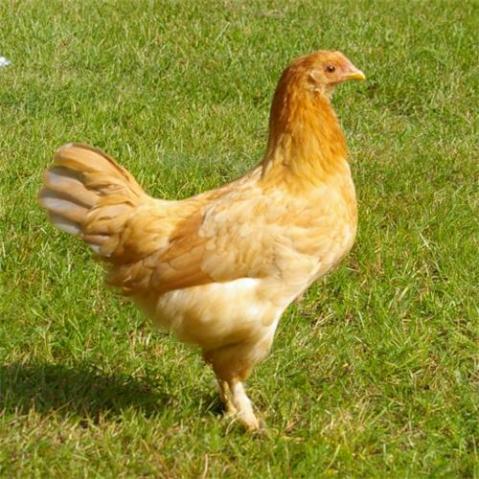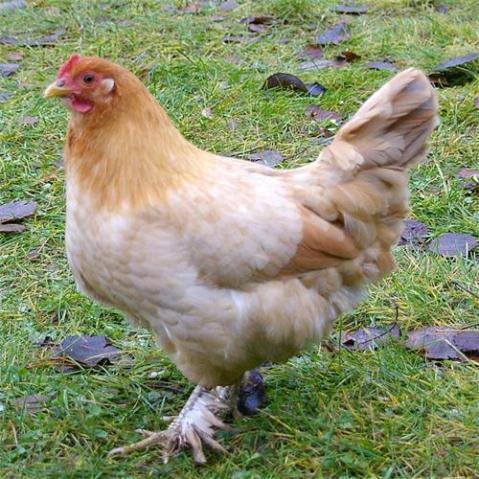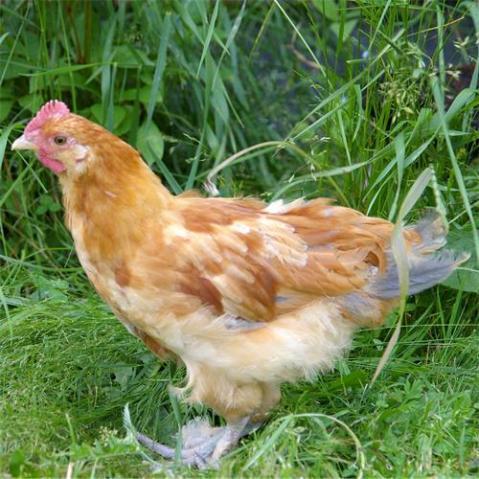i need to see more pics of these birds !
Navigation
Install the app
How to install the app on iOS
Follow along with the video below to see how to install our site as a web app on your home screen.
Note: This feature may not be available in some browsers.
More options
You are using an out of date browser. It may not display this or other websites correctly.
You should upgrade or use an alternative browser.
You should upgrade or use an alternative browser.
Greenfire Farms getting Hedemora Chickens...
- Thread starter V Comb
- Start date
- Thread starter
- #22
It looks like they are there!


- Oct 4, 2009
- 107
- 7
- 101
Congratulations

You'll like this breed
 I have a traditional barnyard flock closely related to the Hedemora chickens with lots of down and had some pure bred ones as well. Currently I just have one pure bred hen of them, booted version.
I have a traditional barnyard flock closely related to the Hedemora chickens with lots of down and had some pure bred ones as well. Currently I just have one pure bred hen of them, booted version.
They are really exceptional freeranging birds, very observant of what's going on around them. They do not lay that many eggs when compared with modern breeds, but they really do lay through winter and just take a break when they molt in autumn. They do great in cold temperatures without frostbite or any signs of feeling cold, last winter they went outside and played in the snow until -15°C and I heard they would tolerate even deeper temperatures, though I did not try and put on the heating when we had -30°C.
The article of Greenfire Farms is mostly correct, but some things could cause misunderstandings. The "three varieties" and different colours of the breed and the black skin do exist in this breed, that's true, but they are usually not separated into pure bred strains. The typical Hedemora flock contains a colourful mix and is not purebred after colour. One flock can contain clean legged and booted birds with all sizes of boots and you'll never know the exact colour genetics of them since the colours are usually mixed in the flocks. (If I understand that right it's like EE flocks.) That was the traditional way to keep them and since this breed was nearly extinct not too long ago people still do it this way to keep the genetic spectrum of a flock as broad as possible. As far as I know the Swedish club for heritage chickens even recommends to not breed the (rare) furry version pure. It just occurs from time to time in regular feathered flocks, but since it can not fly the variety is not very competitive.
The black skinned ones are a result of the Hedemora chickens being crossed (probably hundreds of years ago) with the Swedish black hens who have the same skin tone as silkies do. Though the variety which is far more common in Hedemora chickens has regular red skin. The black skin, same as the furry variety, are the less common ones.
Something which I never saw mentioned online is that they sound different from regular chickens. They crow and make other sounds with a "deeper" voice than other breeds.
Character wise they are a shy breed and fly pretty well when they get scared. The roosters are pretty protective of their flock (strangers and cats beware) and you can't keep the cockerels in the same coop with the main man for long. Two roosters? Don't even think about it

 unfortunately.
unfortunately.
And for those wondering if they can keep these breed in hot areas like Florida. I'd say, don't do that to the poor birds
 unless you have an air-conditioned coop. Mine do not feel well in temperatures above 25°C / 77°F and seriously suffer when it's more than 30°C / 86°F and I have lots of shady places and cool humid ground to lay on. We only have a short period of time with such high temperatures here, maybe a week or two and night-temperatures are cooler even then, so that's okay. But when you have regular temperatures like that, a breed which learned to cope with cold temperatures by growing down-feathers, is less than ideal for that climate. Due to the small saw-tooth combs and next to no wattles they have no possibility to get rid of the heat.
unless you have an air-conditioned coop. Mine do not feel well in temperatures above 25°C / 77°F and seriously suffer when it's more than 30°C / 86°F and I have lots of shady places and cool humid ground to lay on. We only have a short period of time with such high temperatures here, maybe a week or two and night-temperatures are cooler even then, so that's okay. But when you have regular temperatures like that, a breed which learned to cope with cold temperatures by growing down-feathers, is less than ideal for that climate. Due to the small saw-tooth combs and next to no wattles they have no possibility to get rid of the heat.
I have some pics of them and wrote some more statistics about the breed on my page here.




You'll like this breed

They are really exceptional freeranging birds, very observant of what's going on around them. They do not lay that many eggs when compared with modern breeds, but they really do lay through winter and just take a break when they molt in autumn. They do great in cold temperatures without frostbite or any signs of feeling cold, last winter they went outside and played in the snow until -15°C and I heard they would tolerate even deeper temperatures, though I did not try and put on the heating when we had -30°C.
The article of Greenfire Farms is mostly correct, but some things could cause misunderstandings. The "three varieties" and different colours of the breed and the black skin do exist in this breed, that's true, but they are usually not separated into pure bred strains. The typical Hedemora flock contains a colourful mix and is not purebred after colour. One flock can contain clean legged and booted birds with all sizes of boots and you'll never know the exact colour genetics of them since the colours are usually mixed in the flocks. (If I understand that right it's like EE flocks.) That was the traditional way to keep them and since this breed was nearly extinct not too long ago people still do it this way to keep the genetic spectrum of a flock as broad as possible. As far as I know the Swedish club for heritage chickens even recommends to not breed the (rare) furry version pure. It just occurs from time to time in regular feathered flocks, but since it can not fly the variety is not very competitive.
The black skinned ones are a result of the Hedemora chickens being crossed (probably hundreds of years ago) with the Swedish black hens who have the same skin tone as silkies do. Though the variety which is far more common in Hedemora chickens has regular red skin. The black skin, same as the furry variety, are the less common ones.
Something which I never saw mentioned online is that they sound different from regular chickens. They crow and make other sounds with a "deeper" voice than other breeds.
Character wise they are a shy breed and fly pretty well when they get scared. The roosters are pretty protective of their flock (strangers and cats beware) and you can't keep the cockerels in the same coop with the main man for long. Two roosters? Don't even think about it


And for those wondering if they can keep these breed in hot areas like Florida. I'd say, don't do that to the poor birds

I have some pics of them and wrote some more statistics about the breed on my page here.



Quote:
I don't know, it might insulate against the heat. It looks very similar to silkie in feathering. I'd certainly be interested in a close comparison between the down and silkie feathering.
I don't know, it might insulate against the heat. It looks very similar to silkie in feathering. I'd certainly be interested in a close comparison between the down and silkie feathering.
Can we get an update on these birds?
I am very interested in what was mentioned about the "deeper" crow. Especially since I was recently forced to move to the city and have neighbors VERY close. I assumed I would not be able to get away with a rooster, but maybe...
Furthermore, since we live in Anchorage, AK, I think they would be well suited.
I understand that as a landrace breed, I shouldn't expect star layers. Other than that, though, what is egg size like? So far is fertility and other health and hardiness showing to be good in the imported birds? What kind of variety as far as color was brought in? A little bit of everything? These are kind of on the smaller end of the size spectrum, aren't they?
Thanks!
I am very interested in what was mentioned about the "deeper" crow. Especially since I was recently forced to move to the city and have neighbors VERY close. I assumed I would not be able to get away with a rooster, but maybe...
Furthermore, since we live in Anchorage, AK, I think they would be well suited.
I understand that as a landrace breed, I shouldn't expect star layers. Other than that, though, what is egg size like? So far is fertility and other health and hardiness showing to be good in the imported birds? What kind of variety as far as color was brought in? A little bit of everything? These are kind of on the smaller end of the size spectrum, aren't they?
Thanks!
- Jan 29, 2011
- 20
- 0
- 22
Greenfire Farms has some very rare breeds. Some day I hope to get a few birds from them.


Quote:
I don't know, it might insulate against the heat. It looks very similar to silkie in feathering. I'd certainly be interested in a close comparison between the down and silkie feathering.
I've never understood the concept of 'insulating against the heat'. I try to picture myself wearing my down coat when it's 90, and all I see is myself sweating!

I don't know, it might insulate against the heat. It looks very similar to silkie in feathering. I'd certainly be interested in a close comparison between the down and silkie feathering.
I've never understood the concept of 'insulating against the heat'. I try to picture myself wearing my down coat when it's 90, and all I see is myself sweating!

Last edited:
Similar threads
- Replies
- 9
- Views
- 531
New posts New threads Active threads
-
Latest threads
-
Caring for rooster with deformed foot
- Started by JoanieShrubs
- Replies: 0
-
Pip's Project... 52? Thread!
- Started by pipdzipdnreadytogo
- Replies: 0
-
-
-
-
-
Threads with more replies in the last 15 days
-
-
Introducing TUDYBOOK - The Tudy Coloring Book Generator
- Started by Nifty-Chicken
- Replies: 70
-
-
-
-
×

